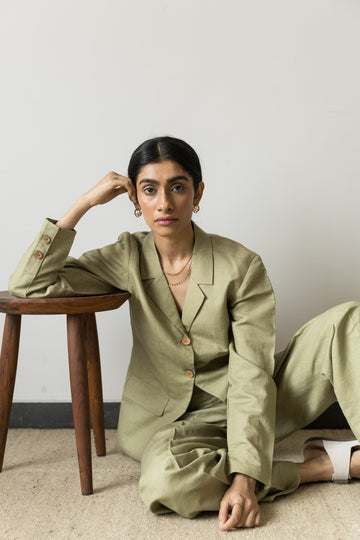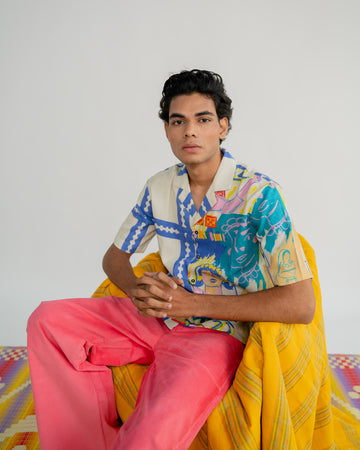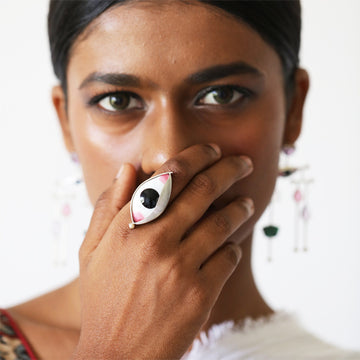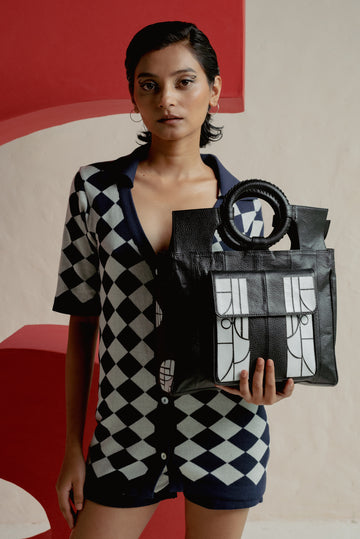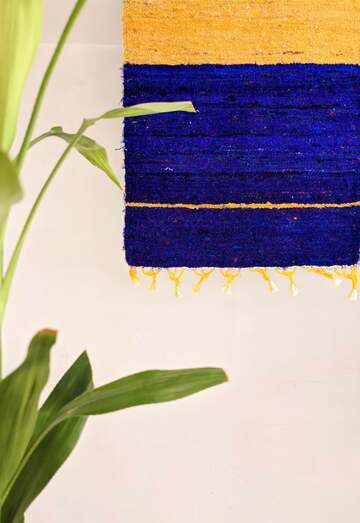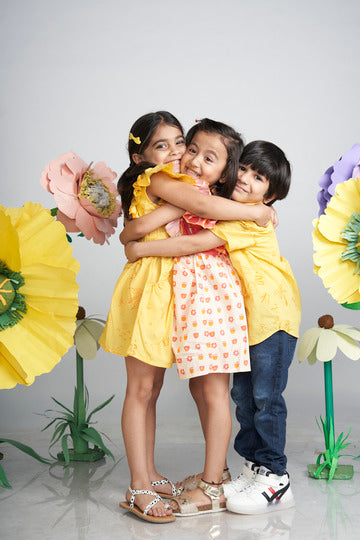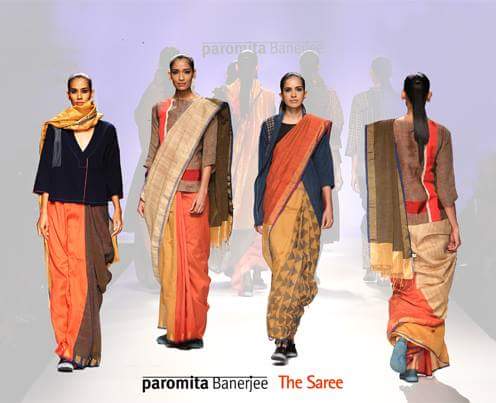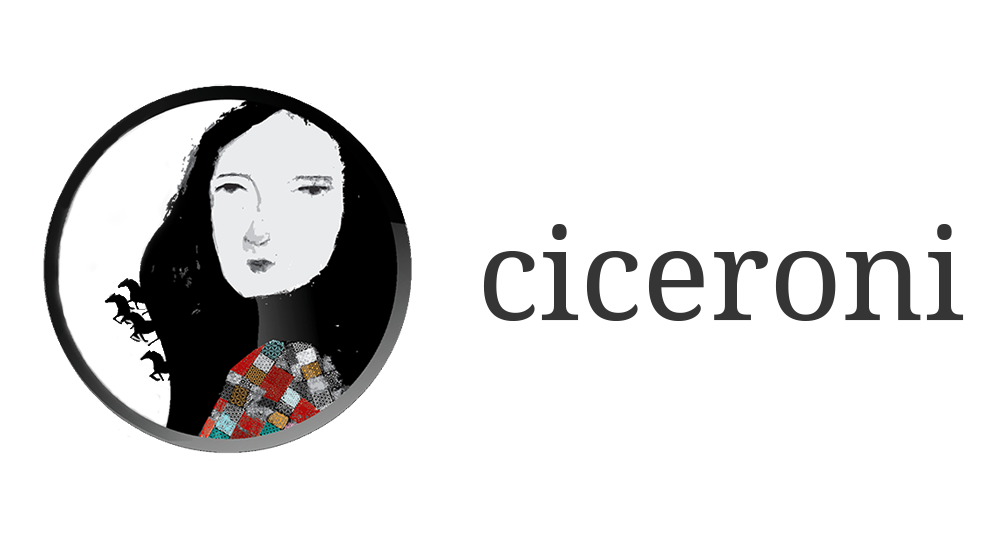
Paromita Banerjee – An ardent handloom lover & promoter of Slow Fashion
Her initiation into creative arts was through her love for visual medium of aesthetics – be it painting or photography or just exploring visuals around. Her desire to blend her love for visuals and understand textiles made her travel to Ahmedabad to study textile design at NID back in 2001. The label works closely with artisans and more than seven craft clusters around India narrating the saga of the craft persons and their weave through their basic apparels.
Paromita Banerjee is in the city for the preview of her Spring Summer 2017 collection at Options Gallery today. In an exclusive interview with Ciceroni, the designer opens up about her love for Jamdani weaves, her innate sense of aesthetics and her firm belief that ‘handloom is not a trend’.
Read on to know further…
1. Can you give us an insight into your entry in Fashion Design field? What is your educational background?
I had a penchant for visual medium. I would get lured by balanced compositions and colours. It led me to love and appreciate water-colour painting and sketching. While I was deciding for my under-graduate course, I realised that the textile design UG course at NID offered me the opportunity to marry my love for visual aesthetics with right knowledge of textile weaving.
5 years at NID allowed me to explore through different departments of arts and design. Photography sessions became more interesting as it dealt with symmetry and compositions. I travel a lot and capture interesting frames which at times serve as an inspiration for my apparel line. In fact, my love for visuals translated in form of photo-shoot for my collection in the initial days of my career.
2. Paromita Banerjee line is handloom and crafts oriented. What has been your go to craft form in India and what has been your signature style fabric?
I have been in total love with Cotton and Khadi. Interestingly, cotton is woven in different ways across the country giving us multiple options to select from. One may find that Mangalgiri cotton from Guntur, Andhra Pradesh will be very different from the Mul cotton from West Bengal. The weave of each of this fabric gives it a unique feel and fall thus making it exciting for the designers to experiment with. I love khadi especially because of its coarse texture. It renders the character to the fabric.
We have been working with around seven different craft clusters from across the country. But if I had to choose one favourite craft form, I would opt for Jamdani. Being born and brought up in Bengal, I have seen Jamdani all my life; with my near and dear ones wearing it on occasions and otherwise. It is a labour intensive craft form where the finesse of the craftsperson is of utmost importance. Jamdanis are mostly woven in lightly dyed backgrounds with designs in white, maroon, black, green, gold, silver and in muga silk of a golden colour. Being light they are excellent for everyday wear in hot country like India.
3. What does your Spring Summer 2017 collection look like?
We have brought in an exclusive preview of our ‘Dhakai Jamadani White’ collection in Ahmedabad. We are showcasing this range for the first time before it hits the retail stores. Every year we bring forth a ‘white collection’ for the balmy summer evenings. The tree of life motif has been used extensively in this year’s line.
Besides that, we have a capsule of Khadi collection loosely based on the concept of “BORO”, wherein mended or patched textiles are used as items of clothing. It was a weaving technique in Japan used by the peasants to increase the longevity of fabrics. We have used Khadi from Gudi-Mudi project of Central India and created our classic style of kurta, tunics and over-sized dresses.
We also have brought our ‘Salt of Life’ collection; it is a handwoven story narrating global aesthetics using Bengal weaves like Dhakai Jamdani, along with coarse Malkha Khadi and Fine mulmul block prints. One will find colour blocks of Tan , Mustard, Mitti brown, olive and Indigo in a range of Handwoven Khadi, Malkha , linen and cottons.
Last but not the least; we have sarees in colour blocks accentuated with gold border to carry you from day to night occasions.
4. What is your take on the evolving slow fashion movement in India?
India has been a country that has advocated handloom since centuries. Handlooms have always been a part of slow fashion. A weaver takes days together to weave one saree; unlike the powerloom where hundreds of metre of fabric is woven every hour. We, as a country, have been the proponents of multiple craft forms.
I strongly believe, handloom is not a trend. It is the way of life. It cannot be like a pantone colour of the year, hit today, miss tomorrow. Fashion entrepreneurs are entering ‘slow fashion’ business without knowledge of suitable sustainable practices to provide recurring livelihood to the artisans. On one hand, one may find that there is a boom in handloom sales and on the other hand, younger generation of these weavers are leaving this profession. There is a mismatch, isn’t it ? We have been believer and promoter of slow fashion since our inception. It’s been eight years now and we still go back to the same craftsmen every year, providing sustainable livelihood options to them while promoting the culture of handlooms.
Market is currently flooded with options for western wear from mass producing brands. People are looking for exclusivity and handlooms are providing them that option. Slow and sustainable fashion means consuming quality products but in less number.
5. Which line of yours has been closest to you till now and why?
My first collection at Gen Next show at Lakme Fashion week in 2009 is closest to my heart. We had to make only 8 garments for the show. It was part simple and part daunting. With creativity over-flowing, it became almost impossible to cut down to just 8 garments and yet we had to do it. Thus editing and final selection had to be done ruthlessly. I experimented with dark colours as base and pop up coloured embroidery in easy wear dresses and jackets.
The first shows always stay close to one’s heart.
6. What difference do you notice in buying patterns in Ahmedabad vis-a-vis Mumbai, Kolkatta or Delhi?
Most of my clients from Ahmedabad understand textiles very well. They can differentiate between the fabrics and are aware of different kinds of handloom fabrics. It is a delight for a designer to know that her label’s consumers are aware. Sarees get picked up more as compared to other apparels but a shift is visible there too.
Whereas in Mumbai and Delhi, people mostly buy on basis of what celebrities are purchasing from us. There is a niche section of audience that loves our handlooms and they are regular indeed.
Across the country, we are witnessing a shift in buying trend for sarees. People are wearing them more often than ever before.
7. What is your personal style statement like?
I always choose comfort over style. I have to go to studio every day and I need breathable handwoven fabrics to keep me comfortable all through the day. However I do add some interesting element in case I have to attend an evening function straight from work.
8. Among the new breed of designers, who are the other contemporaries that you like?
Quite honestly, I want to see them sustaining for few years before I comment on what I like. Sustaining is the biggest task in this industry. However if one was to still choose, I would pick Abraham & Thakore from the older lot. I love the way they handle Indian textiles …
You can meet the designer at Options Gallery today and fill your summer wardrobe with Dhakai Jamdanis!

